Overview:
The Everest region in Nepal houses over 300 mountains alone and is considered an arcadia for climbers since the first successful expedition of Mount Everest(8849m/ 29032ft) back in 1953. Home to 3 of the 8000er (Mt. Everest, Mt. Lhotse and Mt. Cho Oyu) Everest region fascinates climbers from across the globe with its enigmatic beauty. Alongside these gigantic massifs that reach beyond 8000 metres lies various small peaks that are equally alluring and appealing.
Mera and Island Peak climbing are amongst the most famous climbing peaks in the Everest region considered to be the best beginner mountains for climbers all across the globe. The climb to Mera and Island Peak provides a unique opportunity to conquer two stunning peaks in the Himalayas, showcasing both trekking and mountaineering skills.Topographically, these two mountains reside on the same mountain range, the Mahalangur range, but are separated by a small mountain range within. The island and mera peak climb are technically easy and its elevation is just right for beginner climbers to introduce themselves into the higher elevation. In between these mera and island peaks the astounding Amphu Labtsa Pass (5845m/ 19176ft) is sited which offers one of the best panoramic views of the mountains of Everest region.
Your trip to the peak of these two peaks begins from the Nepalese capital city of Kathmandu. You take a thrilling flight to Lukla(2845m / 9334ft), Tenzing-Hillary airport, which is famed for its exotic and minacious location amidst gigantic hills all across. In the days to follow, your Mera and Island Peak climbing tour follows through numerous small Sherpa settlements of : Paiya, Pankongma, Kothe, Thangnag, Khare, Seto Pokhari, Chhukung, Pangboche, Namche finally ending at Lukla. During this trip you’ll traverse through some of the most rugged and uninhabitable geographical locations. Everest region is home to the Sherpas, who are recognised all across the globe for their daring climbing abilities and they are the experts in the mountain climbing arena. During the Mera and Island Peak climbing tour, you will get to know about their culture and lifestyle, which is peculiar and is highly appraised by the western world.
Mera Peak climbing (6,476m/ 21,246 feet) is considered pretty much straight forward as the majority of the stretch of the climb is walking past glaciers with ideal degree of inclination. You will certainly need to use your ice axe and crampons for the stretch. The stretch right below the summit is a bit of a steep ascent that traverses through a snow dome which requires an ascender /jumar on a fixed rope for a smooth climb.
Island Peak climbing (6,189m/ 20,305 feet) begins from the base camp with an immediate climb over a headwall. Your crampons and ice axe is necessary from the initial stretch of the climb. The overall stretch of the Island Peak climb until you reach the summit ridge is steeply inclined through deep snow and ice. Upon crossing the summit ridge, it's a relatively comforting Mera and Island Peaks ascent to the summit.
The island and mera peak climb despite being cited as beginner mountains require a novice level of knowledge of climbing equipments and high altitude traversing. Our team here at Nepal Climbing Adventure company are experts in mountaineering and assure you of the best Mera and Island Peak climbing experience. With our expertise in the climbing industry for more than a decade we are dedicated to creating a safe and memorable climbing experience for our clientele.
Highlights for Mera and Island Peak Climbing:
- Best beginner peaks
- Immerse in Sherpa culture and walk of Life
- Gaze at the astounding Mahalangur Vista
- Traverse through Amphu Lapcha La Pass
- Set foot on two peaks over 6000 metres
- Enjoy breathtaking views of Everest, Lhotse, Makalu, and Kanchenjunga from the summit.
- Traverse through lush forests, charming Sherpa villages, and alpine meadows.
- Experience the thrill of climbing Nepal's highest trekking peak.
- Explore the beautiful Hinku Valley and its surrounding peaks.
- Challenge yourself with glacier crossings and ice climbing.
- Marvel at panoramic views of Everest, Lhotse, Nuptse, and Makalu from the summit.
- Engage in exciting ice and rock climbing on a challenging peak.
- Traverse through stunning glacial landscapes and steep snow slopes.
- Enjoy trekking through the scenic Everest Base Camp area.
- Immerse yourself in the rich culture and hospitality of the local Sherpa communities.
Island Peak vs Mera Peak
Climbing Mera Peak and Island Peak are two popular trekking peaks in Nepal, each offering unique experiences for climbers.
- Island Peak:
Island Peak (6,189 meters) is located in the Everest region. It’s a great choice for those seeking a challenging climb with breathtaking views of Everest, Lhotse, and Nuptse. The ascent involves a steep, icy climb and requires technical skills, including using crampons and an ice axe. Island Peak is often chosen by climbers who want to experience high-altitude mountaineering before tackling Everest.
- Mera Peak:
Mera Peak (6,476 meters) is situated in the remote Khumbu region. It is known for its less technical ascent compared to Island Peak. The climb involves walking on snow and ice but does not require advanced mountaineering skills. Mera Peak is popular among trekkers looking for an adventure in a more tranquil environment. It offers stunning panoramic views of the Everest range, including Everest, Makalu, and Kanchenjunga.
Island Peak is ideal for those seeking a more technical and demanding climb with a focus on high-altitude mountaineering. Mera Peak, on the other hand, is suited for trekkers looking for a less technical climb with rewarding views and a quieter environment. The island peak vs mera peak provide incredible experiences but cater to different preferences and skill levels.
Why Climb Mera and Island Peak with us?
Choosing Combined Mera and Island Peaks climb with Nepal Climbing Adventure offers an exceptional experience in the Himalayas. Our team is dedicated to ensuring a memorable and safe Mera Peak and Island Peak climbing adventure from start to finish. Firstly, our guides are highly experienced and knowledgeable. They are trained in high-altitude climbing and are familiar with the unique challenges of both Mera Peak and Island Peak. During Mera Peak and Island Peak Climb, their expertise ensures you have the best support and guidance throughout your climb.
Secondly, we prioritize safety above all for Mera and Island Peaks ascent. We provide high-quality gear and follow rigorous safety protocols to mitigate risks associated with high-altitude climbing. Our pre-climb training sessions will prepare you for the physical and technical demands of the peaks. Our itineraries are well-planned to enhance your climbing experience. We include adequate acclimatization days to help your body adjust to the altitude gradually. This careful planning reduces the risk of altitude sickness and increases your chances of a successful summit.
In addition to professional support, we offer personalized service to cater to your specific needs. Our team is committed to making your climb enjoyable, whether you are a seasoned climber or a first-timer. We provide detailed briefings and are always available to answer your questions. The journey with us also includes cultural experiences. You will have the opportunity to explore local villages, interact with friendly Sherpas, and learn about their traditions during this Combined Mera and Island Peaks climb. This cultural immersion adds a unique dimension to your Mera Peak and Island Peak climbing adventure ahead.
Our commitment to responsible tourism means we focus on minimizing our environmental impact and supporting local communities. We strive to ensure that your adventure contributes positively to the region. By choosing Nepal Climbing Adventure, you are selecting a team that combines expertise, safety, personalization, and cultural enrichment. Our goal is to make your Mera and Island Peaks climbing experience unforgettable, rewarding, and inspiring.
How Difficult is Mera and Island Peak Climb?
Mera and Island Peaks are popular trekking peaks in Nepal, known for their stunning views and climbing challenges. The climb to Mera Peak and Island Peak presents an adventurous yet thrilling ascent summiting two remarkable Himalayan peaks. Mera Peak is considered the higher of the two, standing at 6,476 meters (21,247 feet). It’s a non-technical climb but requires physical fitness and some mountaineering experience. The climb involves trekking through rugged terrain and snow-covered slopes. Climbers should be prepared for high altitudes and possible altitude sickness. Proper acclimatization is crucial to prevent altitude-related issues because of mera and island peak climbing difficulty.
Island Peak, also known as Imja Tse, is slightly lower at 6,189 meters (20,305 feet). It is a more technical climb compared to Mera Peak. The mera and island peak climbing difficulty involves using climbing equipment such as crampons, ice axes, and ropes. Climbers will face icy slopes and a rock scramble before reaching the summit. The final push to the top includes a steep and challenging section, which requires good physical strength and climbing skills.
Both peaks are accessible via treks from the Everest region. The preparation for island and mera peak includes physical training, acclimatization treks, and some technical skills. Mera Peak is often chosen by climbers seeking a less technical introduction to high-altitude climbing. Island Peak, while more demanding, is a popular choice for those seeking a greater challenge and an introduction to more technical climbing.
Mera and Island Peak Climbing Cost
The mera and island peak climbing price includes:
Permits:
- Mera Peak Climbing Permit: $250 - $500
- Island Peak Climbing Permit: $350 - $500
Trekking Costs:
- Guide and Porter (per day for both treks): $40 - $50
- Food and Accommodation (per day for both treks): $30 - $40
Transportation:
- Kathmandu to Lukla (Round Trip): $300 - $400 (by flight)
- Local Transportation in Kathmandu: $50 - $100
Equipment Rental:
- Climbing Gear (e.g., ice axe, crampons): $100 - $150
- Sleeping Bag and Down Jacket: $50 - $100
Travel Insurance:
- Comprehensive Insurance: $100 - $150
Miscellaneous:
- National Park Fees: $20 - $30
- Tips for Guides and Porters: $100 - $150
This total accounts for the entire duration of both treks, including permits, daily costs, equipment, insurance, and miscellaneous expenses. Ensure to check with your tour operator for the most accurate and up-to-date pricing.
When is the Best Time to do Mera and Island Peak Climb?:
The best times to climb Mera Peak and Island Peak are during the pre-monsoon (spring) and post-monsoon (autumn) seasons:
- Spring (March to May):
This season is one of the best times for climbing both Mera Peak and Island Peak. During these months, the weather is generally stable with fewer storms, which creates favorable conditions for climbing. Temperatures are relatively warm compared to other times of the year, making the climb more comfortable. The clear skies during spring offer excellent visibility of the stunning Himalayan peaks and landscapes. Climbing Mera and Island Peak during this season also provides a longer daylight period, giving climbers more time to complete their treks. While spring is a popular time for climbing, which can mean more people on the trails, the overall conditions are ideal for a successful and enjoyable climbing Mera and Island Peaks climbing experience. Snow conditions are usually manageable, reducing the risk of avalanches and making the Mera and Island Peaks ascent safer.
- Autumn (September to November):
This season is another great time for climbing Mera Peak and Island Peak. The weather during autumn is generally stable, with clear skies that offer excellent views of the surrounding mountains. The temperatures are cooler compared to spring, which can make climbing more comfortable without being too cold. Autumn avoids the heavy snowfall and extreme cold that can occur in winter, reducing the risk of dangerous conditions. The trails and climbing routes are typically in good shape, with less snow and ice making the Mera and Island Peaks ascent safer. Fewer climbers are on the routes during this time, which can provide a more peaceful and less crowded experience. Overall, autumn offers favorable conditions for a successful climb, with clear visibility and manageable weather.
Permits for Climbing Mera and Island Peak via Amphu Labtsa Pass
For climbing mera and island peak via amphu laptsa, you'll need several permits:
Trekking Permit:
- Annapurna Conservation Area Permit (ACAP): Required for trekking in the Annapurna region.
- Manaslu Conservation Area Permit (MCAP): If your route passes through this area.
Climbing Permits:
- Mera Peak Permit: Issued by the Department of Tourism in Nepal. You'll need to apply through a recognized trekking agency.
- Island Peak Permit: Also issued by the Department of Tourism. This is for climbing Island Peak.
Sagarmatha National Park Permit:
- Required for trekking in the Everest region.
Amphu Laptsa Pass Permit:
- Special permits are not typically required for the pass itself, but ensure your trekking agency is informed of your planned route.
Outline Itinerary:
Day 01: Arrival in Kathmandu
Day 02: Fly to Lukla (2845m / 9635ft) & Trek to Paiya (2937m / 9333ft)
Day 03: Paiya to Pangkongma (2950m / 99678 ft) via Col Khari La Pass ( 3081m / 10108 ft)
Day 04: Pangkongma to Ningsow (2863m / 9393 ft)
Day 05: Ningsow to Chhatra Khola (2800m / 9186 ft)
Day 06: Chhatra Khola to Kothe (3678m / 12066 ft)
Day 07: Kothe to Thangnak (4700m / 15419 ft)
Day 08: Acclimatisation in Thangnak
Day 09: Thangnak to Khare (5000m / 16404 ft)
Day 10: Acclimatization in Khare
Day 11: Ascend to Mera Peak High Camp (5780m / 18963 ft)
Day 12: Mera Peak Summit Day and Descend back to Kongma Dingma (4850m / 15912 ft)
Day 13: Buffer Day
Day 14: Khare to Seto Pokhari / Honku Valley (5035m / 16519ft)
Day 15: Seto Pokhari / Honku Valley to Amphu Lapcha La Base Camp (5650m / 18563ft)
Day 16: Pass through Amphu Lapcha La Pass (5845m / 19176 ft) to Chukkung Valley (5546m / 18195 ft)
Day 17: Chukkung to Island Peak Base Camp (5100m / 16732 ft)
Day 18: Island Peak Summit (6,189m / 20,305 feet) and back to Base Camp & Chhukung
Day 19: Buffer Day
Day 20: Chukkung to Pangboche(3955m / 13074 ft)
Day 21: Pangboche to Namche Bazaar ( 3440m / 11286 ft)
Day 22: Namche Bazaar to Lukla (2865m / 9383 ft)
Day 23: Fly to Kathmandu
Day 24: Buffer Day
Day 25: International Departure
Accommodation and Meals During Mera Peak and Island Peak Climbing:
When Climbing Mera and Island Peak, the accommodation and meals are crucial parts of the experience. For both treks, you’ll stay in a mix of teahouses and basic lodges, especially during the lower altitude parts. These teahouses offer simple rooms with basic facilities. They provide a warm and comfortable place to rest after a day of trekking. At higher altitudes, especially during the climbing phases, accommodations become more basic. You'll stay in tents or simpler lodges. These are designed to provide essential shelter and safety.
The focus during Climbing Mera Peak and Island Peak is on comfort and protection from the cold rather than luxury. Meals during the trek are typically provided in the teahouses and lodges. The food is generally simple but nutritious, catering to a variety of dietary needs. Breakfasts usually include items like porridge, eggs, and bread. Lunch often consist of noodles, rice, or local dishes like dal bhat. For dinner, you might enjoy a range of options, including pasta, soups, and meat or vegetarian dishes. Meals are designed to provide the necessary energy for climbing and trekking.
During the Climbing Mera and Island Peak, meals are prepared by camp cooks. They offer hearty meals to keep you fueled for the challenging days ahead. This can include hot soups, rice, pasta, and various vegetables. It's essential to stay hydrated and well-nourished to handle the demands of high-altitude climbing. While the accommodation and meals may be simple, they are tailored to support you through the strenuous activities and provide a comfortable experience as you tackle these remarkable peaks.
What is included?
- All types of organizational requirements
- All trekking and climbing paper works and permits
- All airport and hotel transfers
- Welcome and farewell dinner
- Accommodation and meals during the whole of the expedition
- Government and local taxes
- Reference notes to plan your trip
- An experienced English speaking climbing guide, assistant climbing guide, Sherpa porters including their salary, insurance, food, lodging and all equipments
- A comprehensive medical kit
- Facilities of Email and satellite phones in base camp
- Necessary oxygen bottles
What is not included?
- Nepal Visa fee(bring small denomination cash USD and two passport photographs)
- International airfare
- Excess baggage charges
- Extra night accommodation apart from the schedule due to any reasons
- Lunch and evening meals in case of early return than the scheduled itinerary
- Travel and rescue insurance
There are a number of things that you need to keep in mind if you ever plan for your vacation. Because you want to make the most out of your limited time, it is truly a hectic job for you to find a trustworthy and experienced traveling companion. With Nepal Climbing, you have your problem solved already as we are one of the leading Trekking and Mountaineering organizations in Nepal and have been providing first class service in several travelling packages across the country for many years.
We prioritize your satisfaction and safety
At Nepal Climbing Adventure, our ultimate objective is to arrange the programs for you to make the most out of your valuable time. We value your satisfaction, adventure, amusement and safety. Regardless of whether you are searching for stunning perspectives along the trekking trails in Himalayan mountain range or widely acclaimed, heavenly attractions with developed societies, our exposure and experience in travel business will help you ensure your requirements are met.
We have professional staffs and service
We trust that extraordinary staff lead awesome administration. That is the reason we are collaborated with experienced and eager individuals. We possess authorized and government certified guides who are very much furnished with broad learning of Nepali communities and traditions. They additionally have familiar English speaking abilities and hierarchical capacities to encourage all types trekking groups.
Responsible Tourism and social values
We are endeavoring to lessen the effect of tourism by guaranteeing our staff are very much aware of ecological issues. We are doing our best to create less waste as could be expected under the circumstances and make a point to reclaim non-compostable wastes. We outline our itineraries and work in the field guided by the standards of ecotourism and reasonable tourism. Moreover, all our staff have been given ecological preparing and are extremely aware to the eco-system we enter. Additionally, we are adhering to sustainable assets of energy. Our guides will share you the social values, culture and religious harmony for better understanding the groups you visit.
Customizable Service
Our promise is to provide you with the travelling packages customizable according to your demand fulfilling your budget criteria. So, we can facilitate a minimum of 2 individuals with a personalized service at a reasonable cost.
Online Payment
Or
WIRE TRANSFER
Bank Details:
Account Holder's Name: Nepal Climbing Adventure Pvt. Ltd.
Bank Name: Himalayan Bank Ltd.
Account Number: 01907449340018
Account Type: USD
Address: Thamel, Kathmandu, Nepal
SWIFT CODE: HIMANPKA
For more detail contact us:
Krishna Subedi (Chris Chhetri): +977 9851076791 (24/7, Call/Viber/Watsapp)
We recommend our guests have a valid insurance policy before undertaking an adventure in Nepal Himalaya. During treks and expeditions, the insurance should cover for expenses such as air ambulance, helicopter rescue, and medical care. As an adventure operator, we (NCA), are not permitted to arrange or sell insurance packages here in Nepal as per the Government of Nepal.
Packing List:
Clothing:
- Base Layers: Moisture-wicking thermal tops and bottoms.
- Insulating Layers: Fleece jackets, down jackets, and thermal pants.
- Outer Layers: Waterproof and windproof jackets and pants.
Footwear:
- Trekking Boots: Waterproof and durable with good ankle support.
- Mountaineering Boots: Insulated and suitable for crampons.
- Gaiters: To prevent snow from entering boots.
- Socks: Thermal and moisture-wicking, along with sock liners.
Headgear:
- Warm Hat: Wool or fleece for warmth.
- Sun Hat: Wide-brimmed for sun protection.
- Balaclava or Buff: For neck and face protection.
Gloves:
- Inner Gloves: Thin, moisture-wicking.
- Outer Gloves: Insulated, waterproof.
Eyewear:
- Sunglasses: UV protection and glacier glasses for high altitudes.
- Goggles: For windy and snowy conditions.
Backpack:
- Daypack: 30-40 liters for day essentials.
- Duffel Bag: For porters to carry your gear.
Sleeping Gear:
- Sleeping Bag: Rated for -20°C/-4°F.
- Sleeping Mat: Insulated and comfortable.
Climbing Gear:
- Climbing Helmet: For safety.
- Harness: Comfortable and adjustable.
- Crampons: Compatible with mountaineering boots.
- Ice Axe: Essential for climbing.
- Carabiners and Slings: For safety and rope management.
- Ascender and Descender: For rope climbing and descending.
Other Essentials:
- Trekking Poles: Adjustable and lightweight.
- Headlamp: With extra batteries.
- Water Bottles and Hydration System: For staying hydrated.
- First Aid Kit: Personal medications and basic first aid supplies.
- Toiletries and Personal Items: Biodegradable soap, sunscreen, lip balm.
- Navigation and Communication:
- mera and island peak climbing map and compass: For navigation.
- GPS Device: For precise location tracking.
- Two-way Radio: For communication.
Frequently Asked Questions (FAQ’s)
1. What is the best time to climb Mera and Island Peak?
The best times for Climbing Mera Peak and Island Peak are during the pre-monsoon (March to May) and post-monsoon (September to November) seasons. These periods offer stable weather and clear skies, making climbing conditions more favorable. Avoiding the monsoon and winter months helps reduce the risk of adverse weather.
2. How difficult are Mera and Island Peak to climb?
Both Mera Peak and Island Peak climb are considered moderately difficult trekking peaks. They require basic mountaineering skills and good physical fitness. While Mera Peak is slightly less technical, both peaks involve glacier travel and the use of equipment like crampons and ice axes.
3. Do I need previous climbing experience for Mera and Island Peak?
Previous climbing experience is beneficial but not mandatory for either peak. Basic knowledge of using crampons, ice axes, and ropes can be very helpful. Many trekking companies provide training sessions during the expeditions to equip climbers with necessary skills.
4. How long do the Mera and Island Peak climbs take?
The Mera Peak expedition typically takes around 18-21 days, while the Island Peak expedition generally takes around 19-21 days. These durations include trekking to the base camps, acclimatization days, and the summit attempts. The itineraries are designed to ensure proper acclimatization and increase the chances of successful summits.
5. What permits are required for climbing Mera and Island Peak?
Climbers need several permits, including specific climbing permits for Mera Peak and Island Peak, Sagarmatha National Park permit (for Island Peak), Makalu Barun National Park permit (for Mera Peak), and local area permits. These permits help regulate and protect the regions while ensuring safety and access for climbers.
6. What equipment is needed for climbing Mera and Island Peak?
Essential equipment for both peaks includes crampons, ice axes, harnesses, climbing boots, and ropes. It's advisable to follow a comprehensive gear list provided by your expedition operator to ensure you have all necessary items. Additional gear like warm clothing, sleeping bags, and trekking poles are also important.
7. What are the maximum altitudes of Mera and Island Peak?
Mera Peak stands at an elevation of 6,476 meters (21,247 feet), while Island Peak is at 6,189 meters (20,305 feet). Climbing to these altitudes requires good acclimatization and physical preparation. Both peaks offer stunning panoramic views of the surrounding Himalayan mountains.
8. Is altitude sickness a concern on Mera and Island Peak?
Yes, altitude sickness is a significant concern when climbing both Mera and Island Peak. Proper acclimatization, gradual ascent, and hydration are crucial to minimizing the risk. Symptoms can include headaches, nausea, and dizziness, and it's essential to descend if severe symptoms occur.
9. Can I combine climbing Mera Peak with Island Peak or other treks?
Yes, many climbers combine Mera Peak or Island Peak with other treks, such as the Everest Base Camp trek. This combination provides excellent acclimatization and offers a comprehensive trekking and climbing experience. It allows climbers to enjoy multiple highlights of the Everest region and maximize their adventure.
10. Can a beginner do the Mera and Island Peak Climbing?
Yes, a beginner can attempt Mera and Island Peak Climbing with proper preparation and training. It's essential to build up physical fitness, gain basic mountaineering skills, and acclimatize to high altitudes. Joining a guided expedition can significantly enhance safety and support.
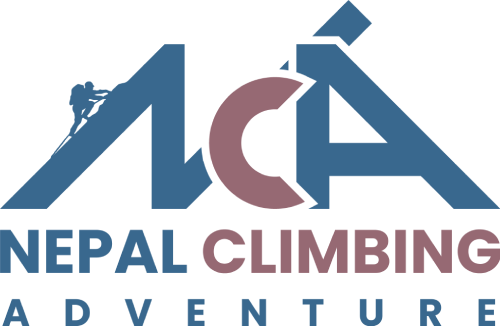
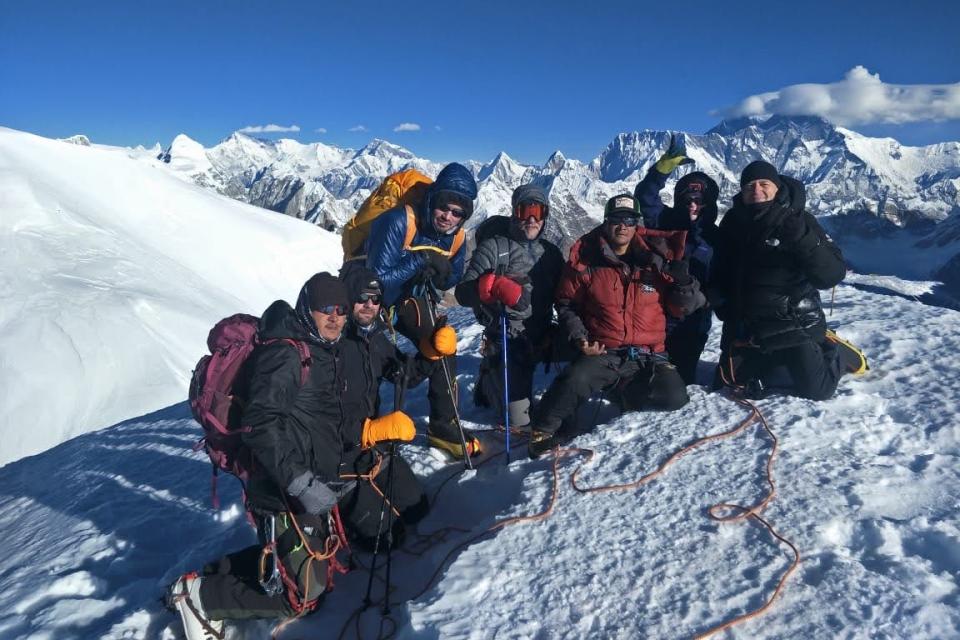
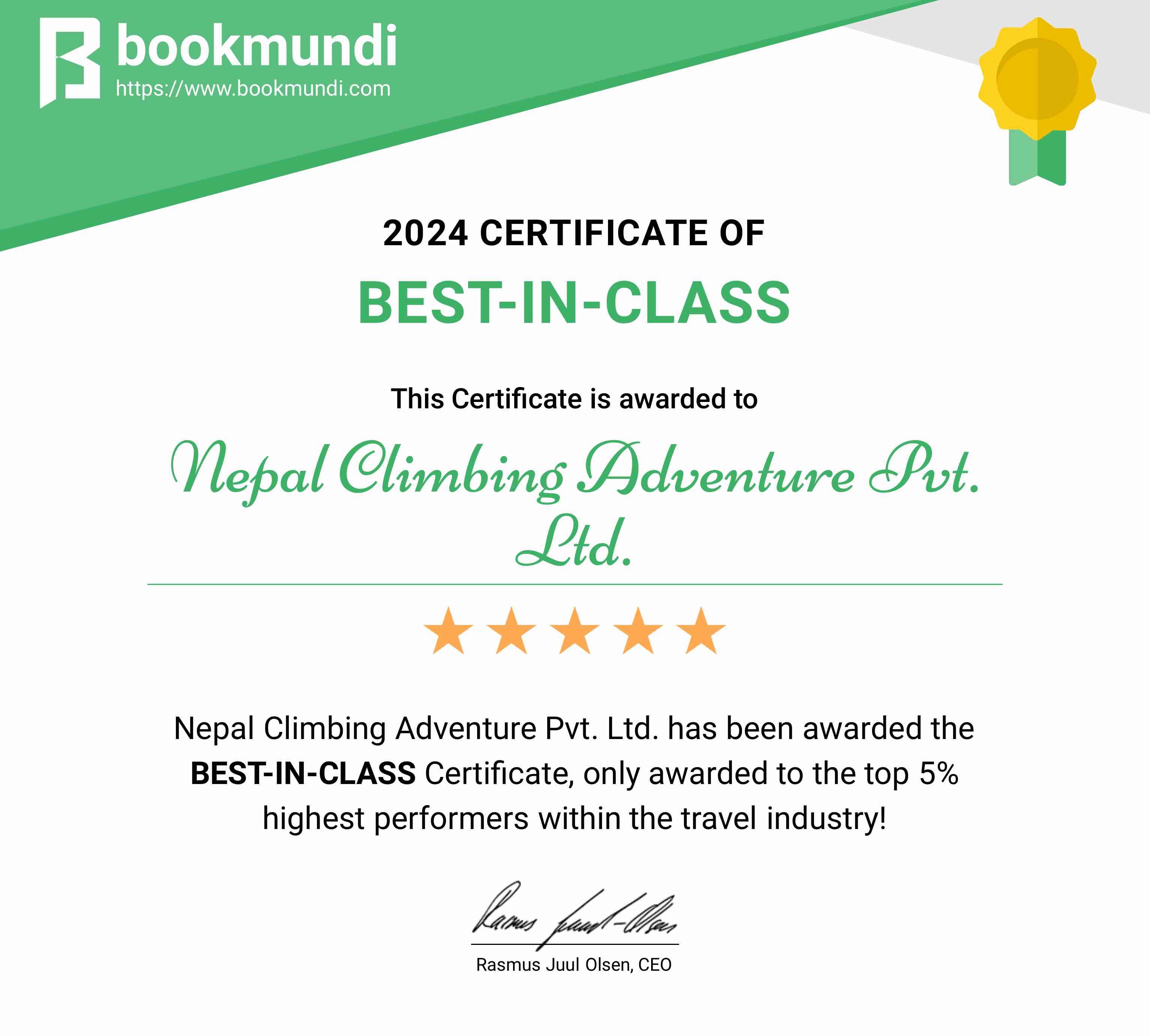

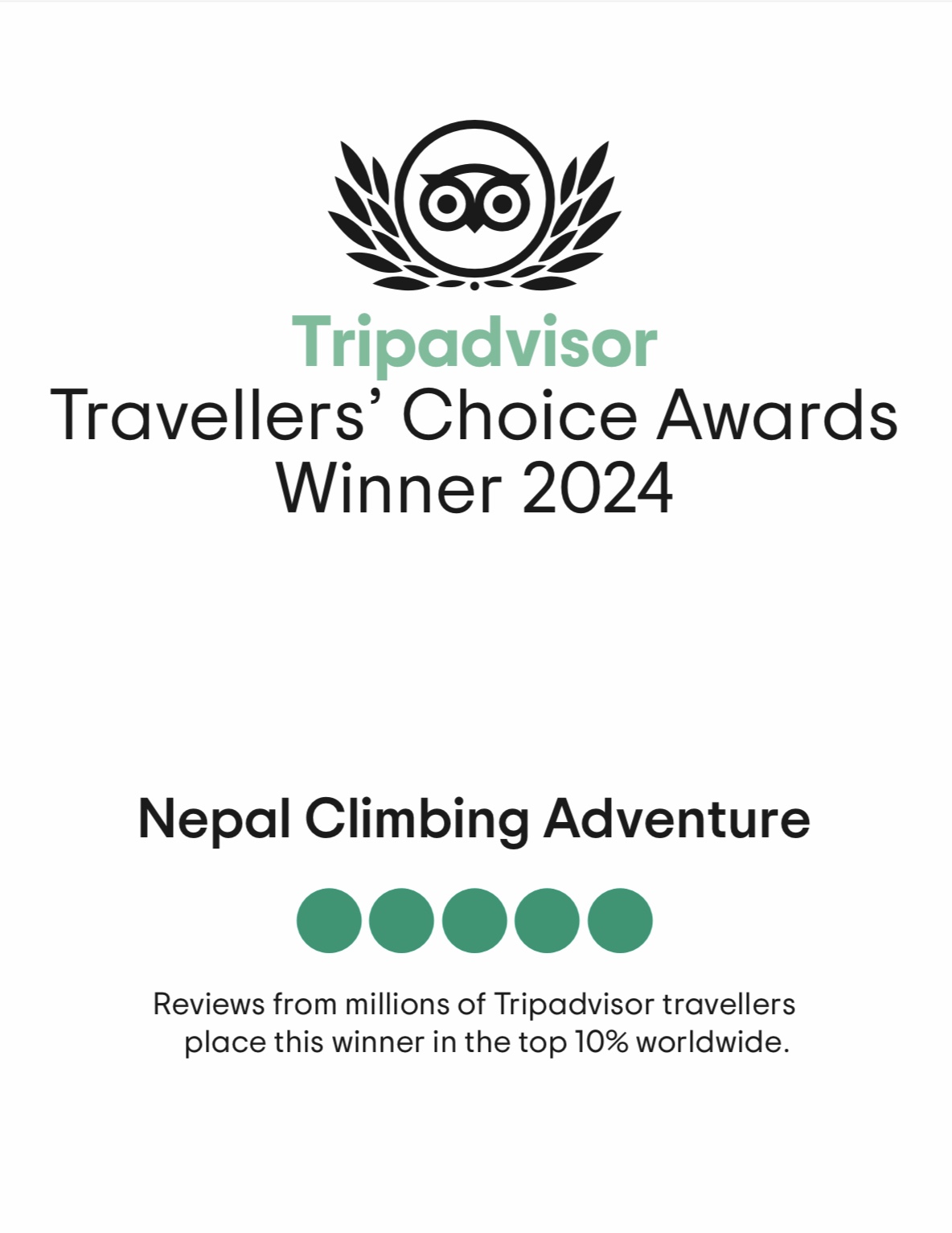
















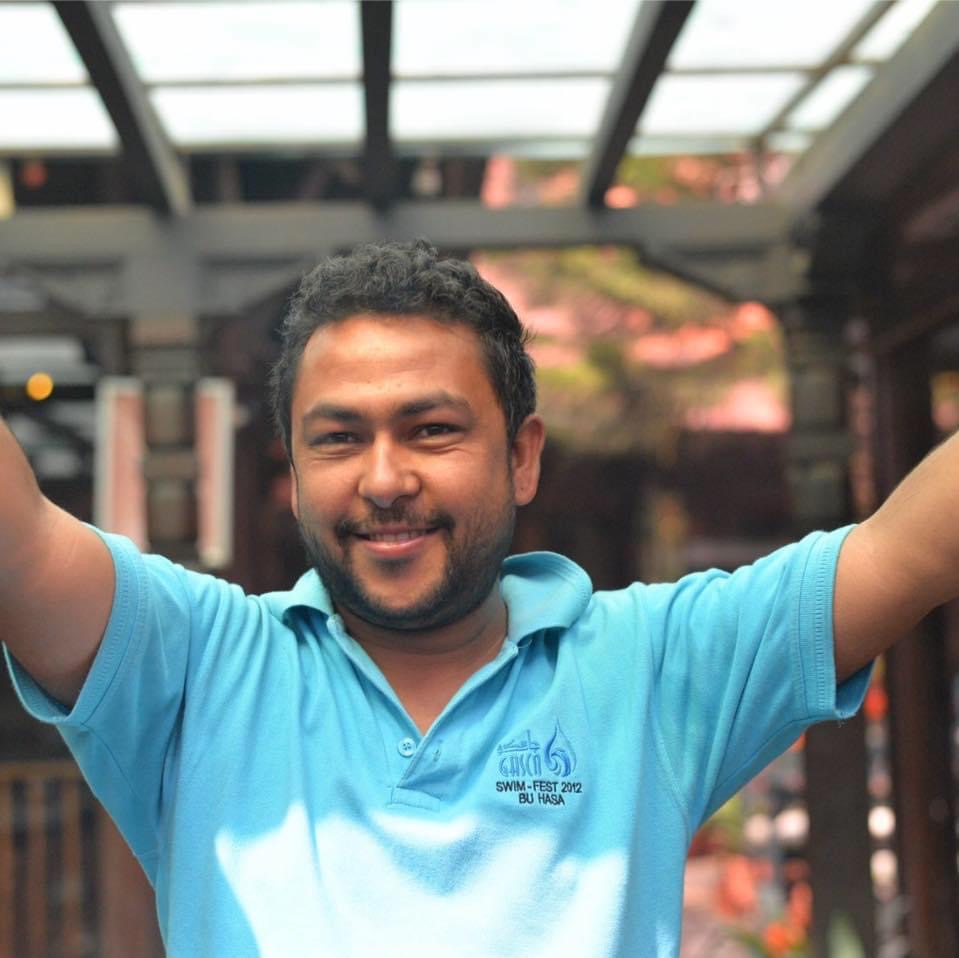 Chris Chhetri
Chris Chhetri